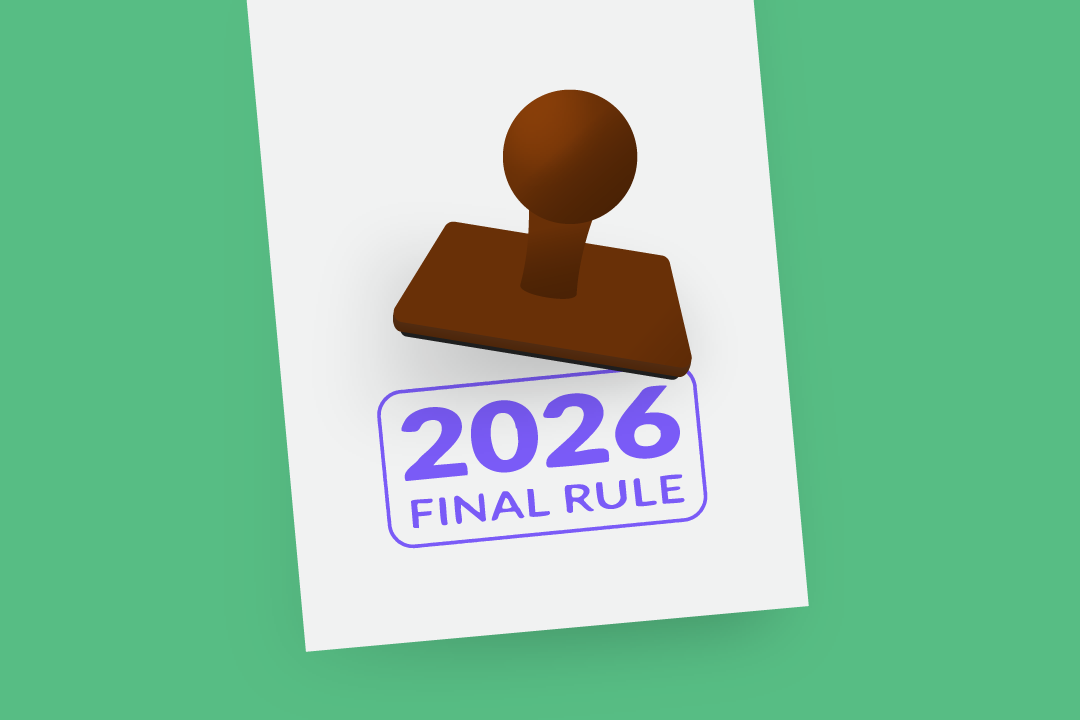From Likes to Leads: Social Media Tips for Rehab Therapists
We talked to a social media pro to get tips for rehab therapists looking to bring in more patients to your clinic.

Subscribe
Get the latest news and tips directly in your inbox by subscribing to our monthly newsletter
Take a quick scroll through your Instagram feed or Facebook page and you will likely find no shortage of rehab therapists promoting and posting some form of content to leverage their business and grow a following. And who could blame them? With over 51% of consumers using social media—or some form of online platform—to evaluate a service, rehab therapists who aren’t on social media are missing out on an untapped referral source. But, to effectively leverage social media, there are some essential social media tips for rehab therapists you need to know.
So, we asked a veteran of the social media game, Dr. Julie Wiebe, PT, DPT, President of Julie Wiebe Physical Therapy and Clinical Assistant Professor at the University of Michigan – Flint, what she’s learned from using social media and how rehab therapists can best leverage those platforms for more engagement.
Take it away, Julie!
What are some of your initial social media tips for rehab therapists just starting out in the game?
Provide content that can be turned into tools for people to stay healthy while also reassuring them that they have somewhere to go when they need a professional opinion. Simplify this content for your target audience and caregivers at home. Some examples of this include:
- Posting pictures and videos that provide multiple ways to stretch a muscle at home,
- Posting on fall prevention where you can target patients—or their caregivers—and link to resources on your website, or
- Targeting parents or grandparents on how best to work with their pediatric little one.
What are some best practices for creating appealing types of content that resonate with patients?
Anyone who plans to use social media for their business should use what I call the “three knows”:
- Know your why,
- Know your audience, and
- Know what you know.
These three points help you define your particular expertise—and help distinguish your social media posts from your competitors’ channels. If you’re new to using social media accounts for your business and plan to use them for marketing your practice, you must understand your purpose and know what to post, how to post, and why you are there. These factors will guide your content choices.
In creating content, know who you are posting for—the “average Joe” type of patient or focusing on a specialized patient type, like athletes. Once you’ve figured that out, create material your audience wants to see. An easy trick for creating engaging content or blog posts is to write down common questions from patients in the clinic and use those questions in your posts. Often I find that the answers I give in the clinic are answers that can be provided via social media.
Dr. Jared Vagy, PT, DPT, (also known as @TheClimbingDoctor on Instagram), recommends using movement and the split-screen function in posts. He states, “As physical therapists, we are movement specialists, so I try to incorporate movement in context to as many social media posts as possible. For example, use a split screen to show patients performing a painful activity while the opposite screen shows an exercise to address this impairment.”
What social media platforms do you recommend for rehab therapists to focus on in 2023?
To start, you need to know the target audience of your physical therapy practice and which platforms they prefer. You’ll want to use Facebook if you’re targeting an older demographic. Parents of student athletes (or just parents in general) spend time scrolling both Facebook and Instagram. And high school athletes and younger college athletes have taken to TikTok, so this may be the platform of choice to hone in on that population.
What are some effective ways to use social media to highlight your rehab therapy services without being too promotional?
If you want to avoid appearing too self-promotional on social media, post content that helps address your target audience’s needs. After all, every patient has a pain point—literally! For example, you can present niche posts that target how to stretch your calves and follow up with a series about why runners have tight calves. Start by simplifying research for your audience and making evidence-based ideas accessible, then move to application. Give followers the tools to help them get well-informed about their bodies.
You can expand your reach in your community by posting and making Instagram Reels using some local landmarks that are in your area and are easily recognized. Post in-person pictures of events like Flint’s Crim race, or use one of the many stairways in LA that are so popular for exercise enthusiasts.
Or, if you have an upcoming in-person or virtual event, you can create a series of posts that spend the next six weeks—or a similar timeline—culminating in the goal-setting event for your target audience. Now you have created an ongoing stream of engagement that provides valuable content without being too promotional.
Vagy also recommends rehab therapists start from a place of education, which helps any pitch for your services come across as less sales-y. After all, if someone is interested in the knowledge you offer, then your ideas sell themselves.
What are some common mistakes that you made early on with social media or that you see rehab therapists make? And how can they be avoided?
You need some experience and expertise before you can do effective content marketing. Often, students or new therapists (#freshpts) have a certain level of expertise on how to get through PT school, but without a wealth of clinical experience, they lack depth of understanding about the content they are posting.
So don’t go out and just start posting information without fully understanding it first. Instead, apply new skills in the clinic, troubleshoot it, be able to answer questions or consider alternatives, and present it authentically as a lifelong learner in your field.
This also applies to the scope of your private practice, so stay in your lane and post what you know. Don’t weigh in on something outside your target focus, and be consistent with solving your patients’ problems. This can be a common pitfall for influencers that try to get too big or grow too fast.
Maybe not so much a mistake as an oversight, but we tend to forget what direct access has brought for us. Sometimes it can be hard to break the mold of physician referrals, but direct access exists in some form for all 50 states. Social media is direct-to-consumer marketing and allows us to tap into a vast resource of potential patients—if you have the right marketing plan.
How can rehab therapists measure the success of their social media efforts and make data-driven decisions to improve their strategy?
Be aware of and know how to interpret your analytics. You can use a platform’s native tools or an outside service for those metrics. Regardless of where you get your data, it should be able to tell you:
- how much traffic a post has;
- when your audience is most likely to view your posts;
- the engagement rate and reach of each post;
- the average length of engagement; and
- your local to international reach, depending on your target audience.
Remember, you’re trying to bring patients in the door, so if your local town is a small community, you do not need 20,000 followers—300 followers that regularly interact and consume your information may be a good measure of success. What’s more important is how many patients are coming to your clinic due to your social media efforts. For example, use a different discount code from one medium to the next to see who—and how many—patients use social media.
A common pitfall seen with social media and the algorithms within each platform is the idea of becoming a “parrot.” The algorithms for posts and reels feed into a copycat mentality that saturates the value of our profession and waters down the message. With proper targeting and thought, you can bring learned expertise locally to your people and move the profession forward.
You also need to be conscious of the ever-changing parameters of algorithms. If your posts’ analytics fluctuate, don’t be discouraged; consistently posting high-quality, engaging content will always be a win. Let your feed act as a virtual resume, where followers can learn about you and your content by scrolling through your posts.
How can rehab therapists use social media to network with other professionals?
In my experience, Twitter is perhaps the best platform for professional-to-professional conversations. It hasn’t necessarily driven more people to my practice, but it has been a great tool for networking and sharing research with other PTs.
What is your biggest tip for rehab therapists using social media to establish themselves as experts in their field?
Your profile on social media becomes your resume for future patients and peers alike. And remember, social media should drive people to your website—so you better have a good website. Once you engage the prospective patient or colleague on social media, your website can close the deal by further selling your expertise.
For anyone just getting started, a good rule of thumb to follow is to “be someone people want to have a beer with.” How you act online will attract people to—or repel people from—your business, so you have to create a good vibe.
What are some challenges facing clinicians as social media continues to evolve? And how can clinicians work around them?
This goes back to understanding your why. You already have the expertise, so share and post what feeds into your wheelhouse. It’s not that different from opening up your own business; if you do not have a clear answer to why you’ve started a business—or in this case, posting on social media—you’ll find yourself a little lost with your direction.
Any final clinical pearls to leave rehab therapists with?
I don’t love the term influencer; instead, I would encourage rehab therapists to be leaders in their field of expertise. Stay on brand, and don’t jump the shark just to get the most likes or follows. This also lends to the ethical aspect of PTs as healthcare professionals. Our degrees and the abbreviations after our names communicate authority, and we need to be aware of and respect the power that holds in those consuming content. This reduces the chances of your content coming off sales-y; instead, you are developing and maintaining a digital therapeutic alliance with your followers.
Fortunately, you don’t need another degree to be active on social—but it does require some skills that can certainly be developed over time. These social media tips for rehab therapists are a great starting point, but it’s up to you to make them fine-tune them so that they work for you, your practice, and your patients. We know you have it in ya!
If you want to learn more about Dr. Wiebe, check her out on Instagram, Twitter, Facebook, or her website. And if you want to take your marketing a step further—social media included—check out this free guide for modern marketing strategies.





